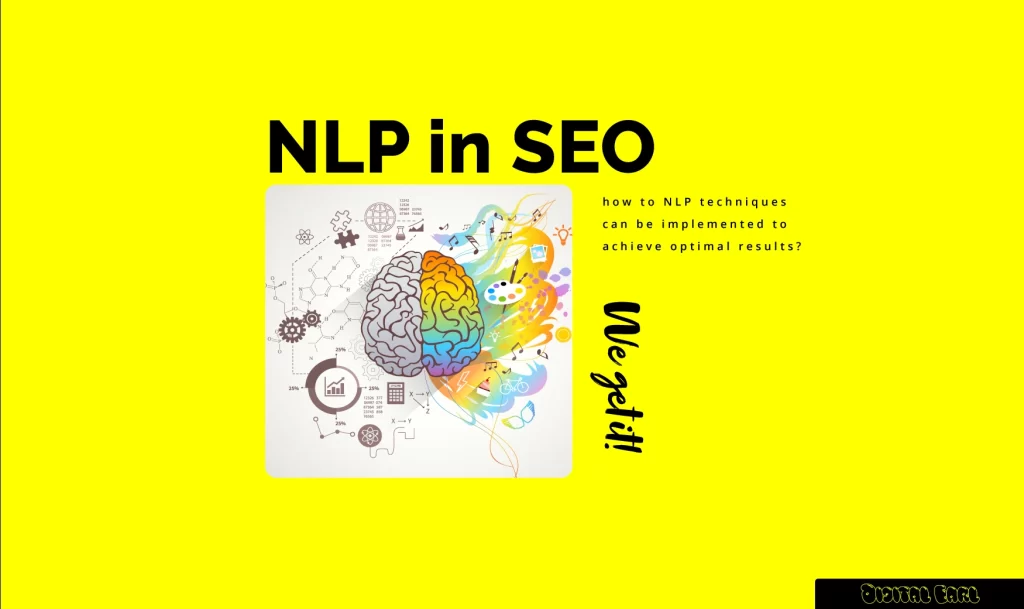Search Engine Optimization (SEO) is and was the main thing in the digital world by driving traffic and consequently ensuring that the target group gets to the content. Nonetheless, SEO has transformed, it is now the Natural Language Processing (NLP) that is the large game player. NLP technology will enable search engines to have a closer look at the users’ goals and thus improve the searching experience for them. Therefore, in marketing, it is of utter importance to stand out through the implementation of NLP. In the following article, we will delve into how NLP is used in SEO, where it is important, and how NLP techniques can be implemented to achieve optimal results.
What is NLP, and Why is it Important for SEO?
Defining NLP
Natural Language Processing (NLP) is a part of artificial intelligence (AI) that can get artificial beings to understand, explain, and replicate human language and behavior. For instance, NLP is the mechanism of systems like Google self-detecting and/or monitoring the context, and then identifying and/or extracting meaning from intricate questions.
NLP and Search Engines
Search engines use NLP beyond simple key phrasing. Rather, the system will contribute to:
- Context Understanding: Models such as Google BERT look at the connections between words to get the subtleties of the language.
- Search Query Analysis: A search engine following the NLP model identifies the users’ query demands, whether they are looking for information, a product, or a specific question.
- Semantic Analysis: This is a process of recognizing the more underlying relationships between terms, which will allow the deciphering of responses to the user’s query with greater precision.
Turning our attention to the use of natural language processing technology to provide guidance to the people who are searching the web, it is worth to emphasize that humans create and process those strings, whereas artificial intelligence is able to understand them. Thus, a user’s search request, if it were “how to bake a cake,” would be fed to the NLP that the search engine operates, which immediately returns a list of the most pointful recipes, baking hints and tricks.
How NLP is Shaping the SEO More Powerfully
Google BERT and RankBrain Impact
Google’s BERT (Bidirectional Encoder Representations from Transformers) and RankBrain are two excellent examples of NLP technology being deployed in real life scenarios. These AI algorithms focus on:
- User Intent: BERT checks the context of each word in a query, so the results are the most probable.
- Relevance But Not Keywords Only: It is not only keywords that are evaluated by RankBrain i.e., it gives priority to original content and looks for all necessary context elements to make the content valuable and quality-laden. The algorithm also prefers user-friendly writing and words with synonyms over overusing the same keywords among the rest of the factors.
Optimized for Semantic Search
With semantic search as the dominant way of searching, the focus is indeed on the understanding of the queries to be matched to what is meant behind it and not just to some similar words. Thus, traditional search tactics seem to be fading out while advanced and innovative techniques like entity-based SEO and semantic keyword research are taking over.
Role of User Intent
Accurate user intent understanding has emerged as a decisive factor in bringing about profit to the SEO industry. And with a proper study of the search query performance and user behavior, the marketers are enabled to deliver content that meets a lot of different needs, whether one needs transactional information, entertainment or navigation.
Key NLP Techniques for SEO Success
1. Improve Content with Semantic Keyword Integration
It is devoting times of forcing exact-matches of keywords into every paragraph of the content behind us. The latest trend in SEO is the following:
- Latent Semantic Indexing (LSI): Making use of associated words and synonyms could be one method to go.
- Contextual Keyword Relevance: It implies that optimizations and the content should be inline.
2. Encode Context-based Strategy in Your Content
Entity-based SEO is all about finding out and optimizing for key topics or entities linked to your specialty. It includes:
- Constructing content by main Topics and their sub-topics. Each subtopic will possess an an H2 tag, and section will collapse due to inactivity.
- Acting in the entity’s knowledge graph allows greater scope for using primary and secondary topics.
3. Optimizing for Voice Search
The tremendous growth of voice search has led SEO to the direction of mediating harmony between it and meaningful natural language. Most critical thoughts are:
- Implementing the differentiated keyword of primary and long-tail.
- Be lively in your writing, write in a conversational style.
- Clearing up common questions firsthand such as “How can I optimize for voice search?”.
Best Practices for NLP-Driven SEO Strategies
1. Leverage Structured Data (Schema Markup)
Structured data helps search engines understand your content’s purpose and context. You can do this by applying schema markup:
- Create a specific space for main descriptions like the pros and cons, answers and inquiries and event data. Also, link the reviews to the products or pages. Also include images and video which makes your content more visual and attractive.
- One of the benefits of that is it increases your chances of getting a rich snippet.
2. Write Naturally and Avoid Keyword Stuffing
Recently rolled out algorithms punish the copying of content for keywords over readability. Instead, let your writing be such that:
- Make sure those articles are ‘user-first’ naturally or in a human way.
- Include keywords where they naturally fit into your content.
- Try to make things connected and logical while also dealing with the user inquiries.
3. Create Topic Clusters and Optimize Internal Linking
Topic clustering is combining relevant things together with the main “pillar” page has the main content. This technique:
- Raises the user relevance score.
- Facilitates user navigation and general use.
- Tells search engines that you are a search authority.
On the other hand, a pillar page out of “SEO Basics” can be linked to these: “Semantic Search Optimization” and “Natural Language Processing in SEO”.
4. Focus on User-Focused Content Creation
Content relevance and quality are not negotiable aspects. One has to bear in mind what the user is looking for:
- Do semantic keyword research properly which will identify user interests.
- Present problems and solutions that are practical and workable. Be sure to your heart into it.
- Employ data-directed practices to evaluate content relevance.
5. Optimize for Intent-Driven Content Strategy
Understanding search intent helps you:
- To make content accordingly in line with what users are searching for.
- To link semantic sets through keyword co-occurrence patterns.
- Create learning tools related to different intents (like tutorials for factual queries).
Finally, the advancement of the AI of the SEO sector through NLP is making it more focused on users and contextually rich. Marketers can use successful strategies like semantic keyword integration, structured data, intent-driven strategies to follow both the requirements of search engines and users.
It is no longer sufficient to providing artificial intelligence with information on new algorithms such as Google BERT, but adopting NLP-oriented practices has now become a must. To succumb to these moves, this is a must be a must since for one to be always ahead keeping one’s ones up-to-date always being visible to the audience and staying interesting.



